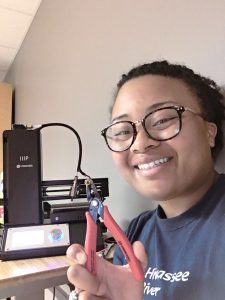“Turning and turning in the widening gyre
The falcon cannot hear the falconer;
Things fall apart; the centre cannot hold;
Mere anarchy is loosed upon the world,
The blood-dimmed tide is loosed, and everywhere
The ceremony of innocence is drowned;
The best lack all conviction, while the worst are full of passionate intensity.”
15 years after the Hartz reforms made Germany a tougher and more resilient place in which to work and live, decades-long semi-austerity has left the motor of the European economy coughing and sputtering in anticipation of a global Trumpcession. Amidst worldwide turbulence and upheaval, a baby boomer generation sets to retire, leaving the reins of Mittelstand companies in the hands of a TV generation trying to raise an internet generation. This could not have happened at a foggier time. China, the workshop of the world, is asserting itself and decidedly moving upmarket in many niches. Manufacturing excellence is not something that small German family firms put on awards on the wall, manufacturing excellence is the dream that one of the richest and most powerful countries in the world wants to attain. A million new immigrants have exposed long glossed over German societal fractures such as extreme right terror, nationalist violent groups of all stripes, a radicalized Antifa, new Germans not entirely absorbed and oops the ossi wessi divide or areas of economic backwardness didn’t disappear with the Trabant. Cooperation, social adhesion, catholicism, and identity; they are all ebbing or under siege. Even though roads seem in perennial repair; underinvestment in infrastructure has left the country looking less than spiffy.

It seems that if you move your government to Berlin, Berlin will look nicer while the country looks more like Berlin. Underinvestment in education has meant that in this area the nation lags European peers as well. Germany does invest cohesively in innovation but seems set to perennially lag behind the US and China on that front. Lack of VC capital, when compared to the US, means that there are far fewer startups, especially far fewer larger successful ones. Erstwhile staid institutions such as Deutsche Bank seem wobbly or indeed have been quite adept at carrying on as a giant hedge fund/Russian Money transfer scheme while masquerading as a boring financial institution. The Volkswagen scandal still weighs heavily on a collective culture of excellence and quality.

Over 100 years ago the German government had a goal for itself in the collective stumble to slaughter that was the First World War. The government’s goal was the: establishment of a Germany dominated customs union. 104 years on, two observations can be made:
- Germans are persistent
- Be careful what you wish for
Many people would have given up after the First World War, not the Germans. Many people would then have given up after the Second World War, not the Germans. They kept on going and finally after 100 years got their Germany dominated customs union. But, now what? A nation-state born out of a conflagration the German Federal Republic now has over 70 years of prosperity, growth, stability, and peace behind it. After turbulence and destruction, there was rubble and this was turned into a path to future riches and safety that would have seemed a feverish dream to those clambering through bomb crater hewn Allee’s. Germany is one of the most successful countries that the world has ever seen, but what is its place in a world that is seeing the demise of the nation-state and the rise of ultra-nationalism simultaneously?
Nihilism, apathy, and extremism grow as we enter the age of China and the caudillo. Civil society is for textbooks and what will the terrorists do once we’ve run out of acronyms for them? It is becoming increasingly clear that those left-wingers that shouted while standing on boxes for workers’ rights have essentially won, only to suddenly lose. All of their dreams from worker safety to pay, to vacations, to affordable housing have been granted. Meanwhile, the right has gotten its law and order with crime being reduced to next to nothing and violent crime being something you’re likelier to find on vacation than at home. Centrists have gotten their civil society a little bit of everything a la carte dream while länder press and public have power. Businesses are easy to start and are well regulated while labor unions have been so successful as to be useless. Essentially Germany has done such a good job of keeping its promises and attaining its dreams that it has no more hopes and dreams with which to feed a future thirst for that thing that is Germany.

Extremism is on the rise because they do manage to break through a cluttered media landscape with simple ideas and now it is Baader Meinhof Phenomena that dominate the things that we think about. Technocratic policies alienated many because they simply were too complex for a large segment of the populace to understand. Embarrassed to ask, they become disenfranchised by the multisyllabic integrated policies and their fine-tuning. Alienated, they feel as if they were patronized by ‘adults in the room.’ Everyone, however, can join a discussion about what kind of headdress the supermarket check out girl should be allowed to wear. A resurgence is populism is therefore not because of the anti-immigrant, xenophobic, isolationist nature of these policies or indeed their objectives. Populism has grown due to the fact that it is simple to understand, talk about and spread in a confusing world. Populism is popular now because it is a series of hale spears designed to pierce the heart of modern democracy itself. Tossed by tossers who are nihilists themselves but do believe in their own call to power the populist policies are popular because they are simple, fit into a soundbite and are easy to talk about. As per Mr. Yeats, therefore, we can see ourselves in a place where indeed, the center is not holding and the good roam listlessly while the sheep are stirred by the truthful seeming simple burn that is hate.

How to counter this as a member of society which through policy and concerted effort has tried to create and maintain an equitable country for all? We must come up with new dreams as vibrant scary and hopeful as the ones of the past. From the land of Herder new ideas are emerging, in fact, that could, in fact, herd us all to a hopeful optimistic future where harmony reigns supreme. Having accomplished the rise of the human Germany now turns to the rise of the robot.
Images: Lisa, Trine, Cynthia, Stefan.
The post Industrie 4.0: Mein Har(t)z Brennt Part 1 appeared first on 3DPrint.com | The Voice of 3D Printing / Additive Manufacturing.



